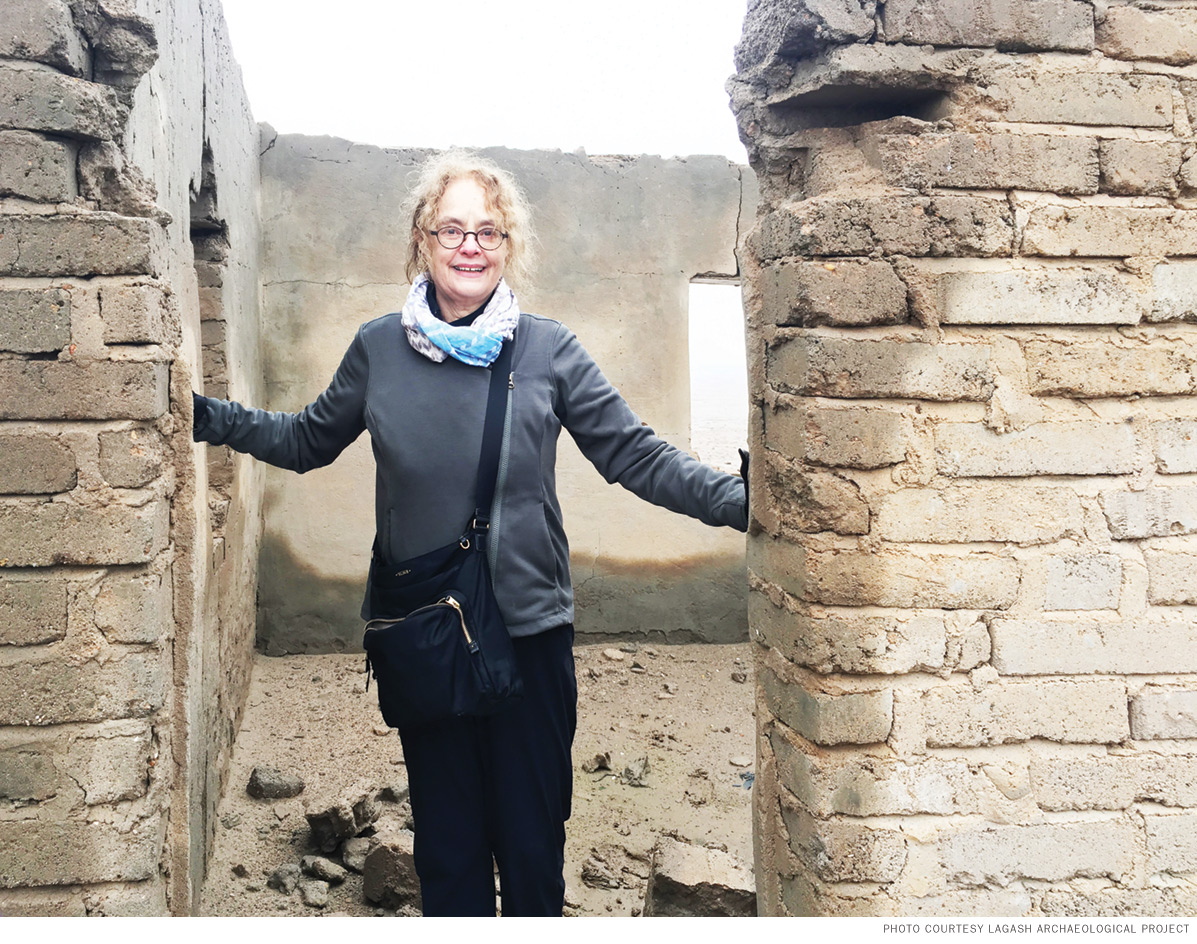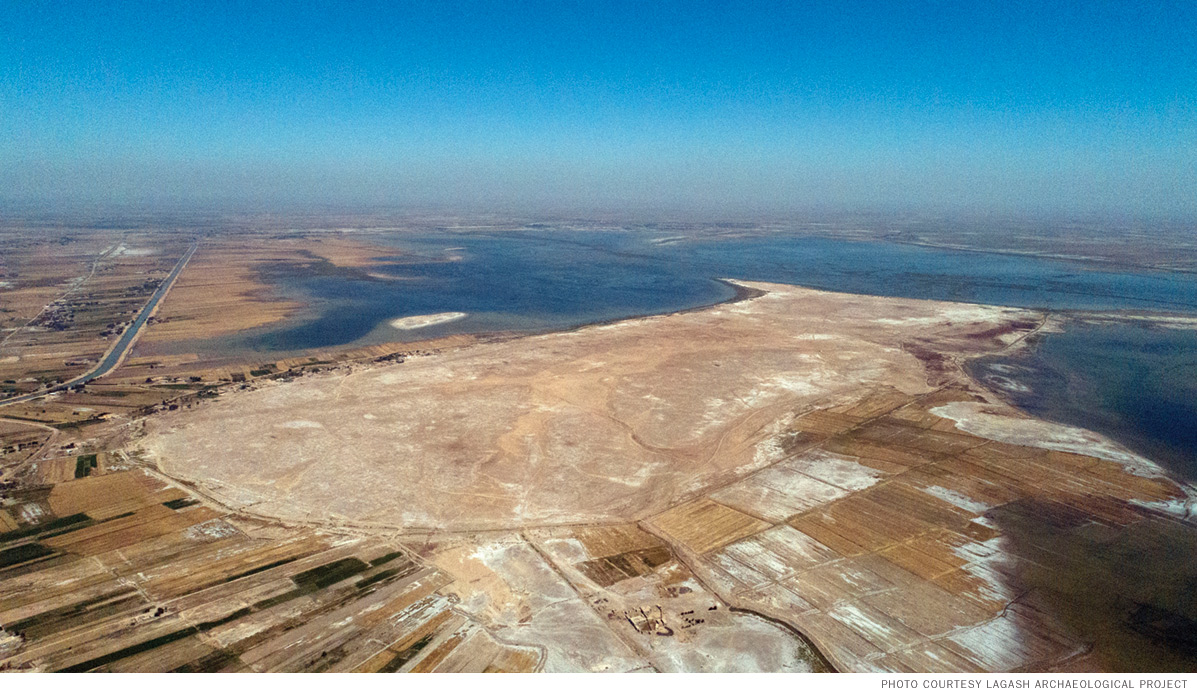
Dr. Holly Pittman at Lagash, December 2018. PHOTO COURTESY LAGASH ARCHAEOLOGICAL PROJECT.
May 9, 2023
It is the spring of 2022 and hard going. An excavator diligently chips away densely packed clay earth within the walls of an archaic mudbrick building. Hard-packed tawny earth stretches toward the horizon in every direction. Sara Pizzimenti, an archaeologist and ceramicist from the University of Pisa and one of the season’s co-field directors, stands before the sunken pit her crew is working on: Trench 3 in Area H at the archaeological site of Tell al-Hiba. The Sumerians would have known it as Lagash, an ancient city built midway between the Tigris and Euphrates rivers in southern Mesopotamia, some 350 kilometers south of Baghdad and 225 kilometers north of Basra.
Pizzimenti turns to a camera filming the work—the video can be seen at web.sas.upenn.edu/lagash—and explains what the team has uncovered: the 4,700-year-old walls of what is, so far, an unclear structure from the beginning of the Early Dynastic period. There is an alley beyond the building, she adds, and beyond that another building. An ancient neighborhood is appearing from beneath the sediments, but for now, all efforts are focused on removing collapsed mudbrick inside the nearest building—whose caved-in roof they have already removed. “We do hope to find the floor,” she says, and adds, “with something on the top, maybe.” It’s hard not to catch the hopeful note in her voice.
Click HERE to read the full article.


